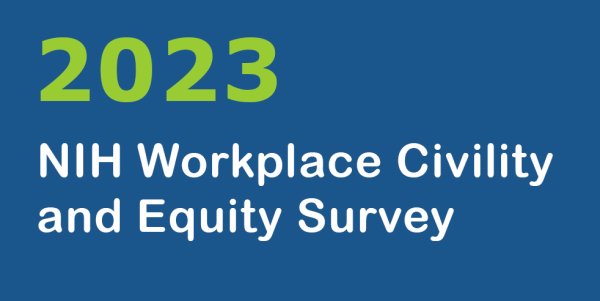| Term | Definition |
|---|---|
| Harassment | Unwelcome, deliberate, or repeated unsolicited verbal or physical conduct that is based upon protected classes (race/ethnicity, religion, national origin, pregnancy, sexual orientation, gender identity, gender expression, age, disability, and genetic information), including, but not limited to, comments, gestures, graphic materials, physical contact, or solicitation of favors. (Ref: NIH Policy Manual) |
| Inappropriate conduct | Any comment or conduct that disparages or demonstrates hostility or aversion towards any person that could reasonably be perceived as disruptive, disrespectful, offensive, or inappropriate in the workplace. (Ref: NIH Policy Manual) |
| Microaggressions | The everyday, subtle, intentional — and oftentimes unintentional — interactions or behaviors that communicate some sort of bias toward historically marginalized groups (e.g., an offensive remark being made regardless of the intent behind it). (Ref: NIH Policy Manual) |
| Unfair treatment | Behavior(s) that is perceived to be unkind, inconsiderate, or unreasonable for reasons that are not related to job performance or conduct but do not rise to the level of Inappropriate Conduct or Harassment. |
| Discrimination | To treat a person differently, or less favorably because of their race, color, religion, sex (including pregnancy, gender identity, and sexual orientation), national origin, disability, age (40 or older), or genetic information. (Ref: US EEOC) |
| Genetic Information | Family medical history; information about an individual's or family member's genetic tests, such as tests to detect whether an individual has an increased risk of developing certain cancers or other diseases; and the fact that an individual or the individual's family member has sought or received genetic counseling or has participated in clinical research that includes genetic testing. (Ref: US EEOC) |
| Gender Expression | The manner in which a person communicates about gender to others through external means such as clothing, appearance, or mannerisms. This communication may be conscious or subconscious and may or may not reflect their gender identity or sexual orientation. (Ref: NIH EDI) |
| Gender Identity | A person’s deeply held core sense of self in relation to gender. Gender identity does not always correspond to biological sex. (Ref: NIH EDI) |
| Targeted Disability | Defined by OPM as a Developmental Disability, for example, autism spectrum disorder; Traumatic Brain Injury; Deaf or serious difficulty hearing, benefiting from, for example, American Sign Language, CART, hearing aids, a cochlear implant and/or other supports; Blind or serious difficulty seeing even when wearing glasses; Missing extremities (arm, leg, hand and/or foot); Significant mobility impairment, benefiting from the utilization of a wheelchair, scooter, walker, leg brace(s) and/or other supports; Partial or complete paralysis (any cause); Epilepsy or other seizure disorders; Intellectual disability; Significant Psychiatric Disorder, for example, bipolar disorder, schizophrenia, PTSD, or major depression; Dwarfism; Significant disfigurement, for example, disfigurements caused by burns, wounds, accidents, or congenital disorders. (Ref: OPM) |
| Reportable Disability | Defined by OPM as a speech impairment; spinal abnormalities, for example, spina bifida or scoliosis; Non-paralytic orthopedic impairments, for example, chronic pain, stiffness, weakness in bones or joints, some loss of ability to use part or parts of the body; HIV Positive/AIDS; Morbid obesity; Nervous system disorder for example, migraine headaches, Parkinson’s disease, or multiple sclerosis; Cardiovascular or heart disease; Depression, anxiety disorder, or other psychiatric disorder; Blood diseases, for example, sickle cell anemia, hemophilia; Diabetes; Orthopedic impairments or osteo-arthritis; Pulmonary or respiratory conditions, for example, tuberculosis, asthma, emphysema; Kidney dysfunction; Cancer (present or past history); Learning disability or attention deficit/hyperactivity disorder (ADD/ADHD); Gastrointestinal disorders, for example, Crohn's Disease, irritable bowel syndrome, colitis, celiac disease, dysphexia; Autoimmune disorder, for example, lupus, fibromyalgia, rheumatoid arthritis; Liver disease, for example, hepatitis or cirrhosis; History of alcoholism or history of drug addiction (but not currently using illegal drugs); Endocrine disorder, for example, thyroid dysfunction. (Ref: OPM) |
| Organization | Institute or Center (IC), Division or Office. Please respond to these survey items based on the level in your organization that is appropriate for the content of the question. Depending on how your IC is structured, this could be one or more levels above your own. |
| Work Unit | An individual’s immediate work unit headed by their immediate supervisor/NIH Point of Contact. |
| Unofficial Supervisor | An individual who holds a position of authority or perceived authority over another individual in their professional role with real or perceived authority, influence, or power over the other’s conditions of employment or with the ability to directly impact the other’s career progression. |
| Official Supervisor | Typically, responsible for employees' performance appraisals and leave approval. (Ref: OPM) |
| Management/Leader | Staff member(s) an individual’s immediate supervisor reports to or one level above and individual’s supervisor in the organization. |
| NIH Point of Contact | For contractors, this may be a COR on a contract, a Contracting Officer, or the federal employee you most closely work with at NIH. |
Key Terms and Definitions
Contact us to ask a question, provide feedback, or report a problem.
